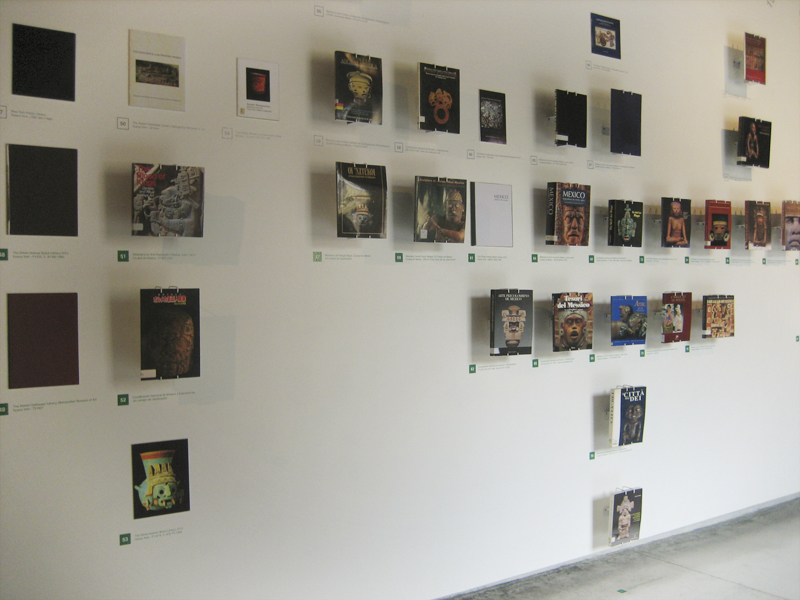I displayed the exhibition catalogues in a grid. This traditional organization might have proposed an order, perpetuating a supposed continuity between Mexican past and present. But besides the possible inscription of a mythical progression that such an organization offers, the grid also allowed one to visualize a set of discontinuities: moments when the production of the catalogues/exhibitions abroad increased dramatically and moments when the production stagnated or even decreased. Within the chronology, on average, one or two catalogues per year were printed. The grid enabled an evaluation of the moments when discontinuities took place in relation to contextual factors, such as economic development, political stability and, of course, archeological discoveries. For instance, Templo Mayor, the main Aztec site located in Mexico City , was not discovered until 1978– before this major archeological find, few exhibitions featured Aztec culture. Mayan work, which was then better known, was more frequently presented. The discovery of the Templo Mayor transformed the interpretation of Mexico 's past at a moment when economic conditions– Mexican oil exports doubled that year due to the Iranian Revolution– enabled a new wave of cultural export. In the 1980s the Iran-Iraq war further reduced the output of crude oil in that region, forcing its price even higher. For several years, the countries of OPEC maintained these high prices by reducing their production. The tandem events of the uncovering of Templo Mayor and the rise of oil prices helps explain the increased production of international exhibitions and catalogues from 1979 to 1984.
Another discontinuity takes place during the years when Mexico was preparing its economic alliance with the US and Canada through the signing of the NAFTA treaty. In 1992, the year corresponding to the trade agreement's proposal and after four years of economic stability, the catalogues of six exhibitions in Germany , England , France , the US , Italy and Spain were published. This rate continued for a couple of years and can be paired with other cultural actions orchestrated to promote the diversity of Mexican cultural heritage such as the country's presence in Europalia1 in 1993.
